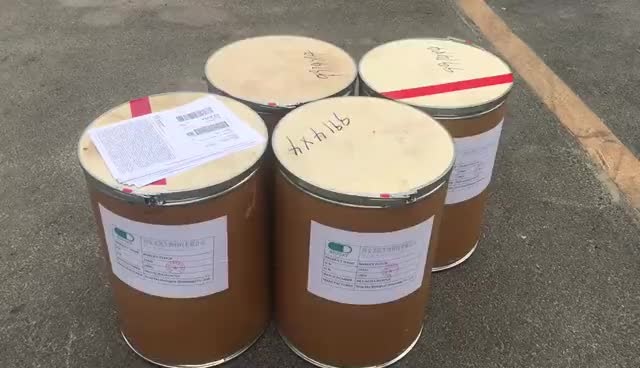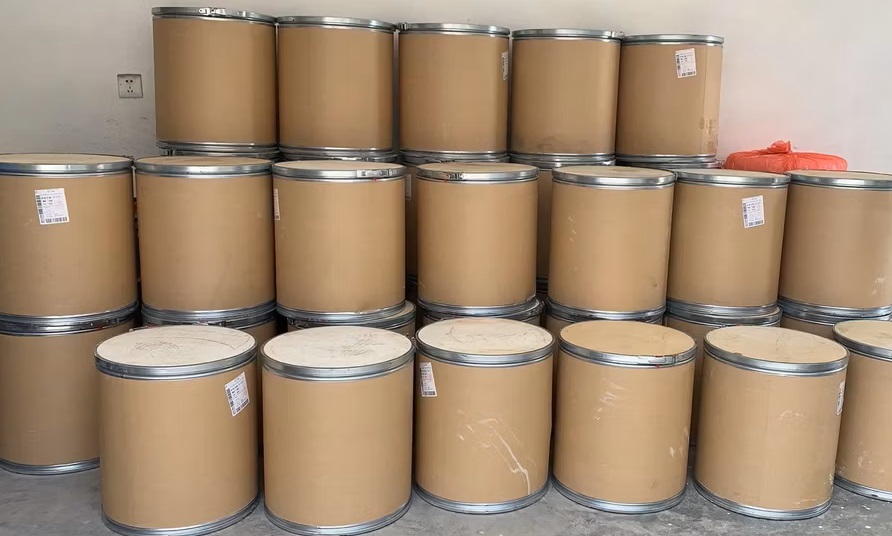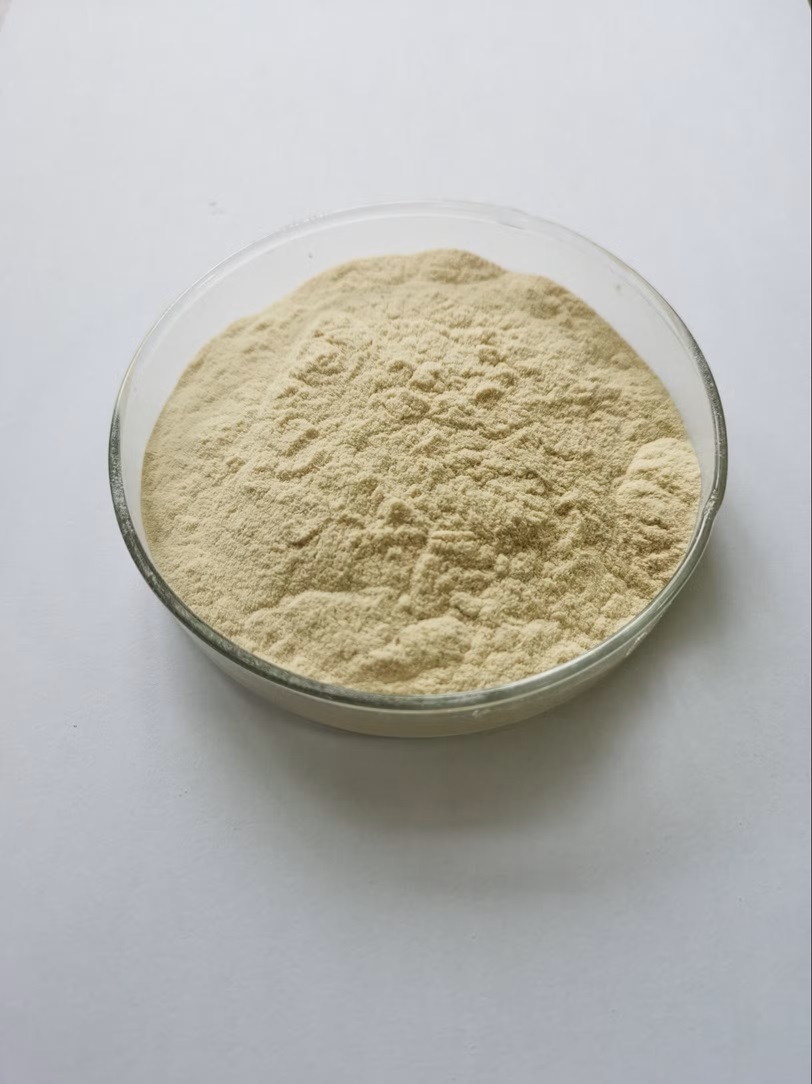We unleash your business potential by maximize the business innovation.
Send EmailTannic acid, Tannins, Quebracho, Gallotannin, Gallotannic acid, Kebroka, 1401-55-4
CAS: 1401-55-4
Molecular Formula: C76H52O46
Names and Identifiers
| Name | Tannic acid |
| Synonyms | Tannins Quebracho Glycerite Tannic acid Gallotannin acid,tannic acidetannique abcolsumack19 Galloylglucose Chinese tannin chestnuttannin Gallotannic acid abcoltannicacidtech acaciamollissimatannin Penta NM digalloyl glucose 1,3,6-tris-O-(3,4,5-trihydroxybenzoyl)hexopyranose 1,2,3,4,6-pentakis-O-[(3,4-dihydroxy-5-{[(3,4,5-trihydroxyphenyl)carbonyl]oxy}phenyl)carbonyl]hexopyranose |
| CAS | 1401-55-4 |
| EINECS | 215-753-2 |
| InChI | InChI=1/C76H52O46/c77-32-1-22(2-33(78)53(32)92)67(103)113-47-16-27(11-42(87)58(47)97)66(102)112-21-52-63(119-72(108)28-12-43(88)59(98)48(17-28)114-68(104)23-3-34(79)54(93)35(80)4-23)64(120-73(109)29-13-44(89)60(99)49(18-29)115-69(105)24-5-36(81)55(94)37(82)6-24)65(121-74(110)30-14-45(90)61(100)50(19-30)116-70(106)25-7-38(83)56(95)39(84)8-25)76(118-52)122-75(111)31-15-46(91)62(101)51(20-31)117-71(107)26-9-40(85)57(96)41(86)10-26/h1-20,52,63-65,76-101H,21H2 |
| InChIKey | LRBQNJMCXXYXIU-PPKXGCFTSA-N |
Physico-chemical Properties
| Molecular Formula | C76H52O46 |
| Molar Mass | 1701.2 |
| Density | 1.2965 (rough estimate) |
| Melting Point | 218 °C (lit.) |
| Boling Point | 862.78°C (rough estimate) |
| Flash Point | 198°C |
| Water Solubility | 250 g/L (20 ºC) |
| Solubility | Soluble in water, etc. |
| Appearance | Yellow powder |
| Color | Yellow to light brown |
| Merck | 14,9052 |
| BRN | 8186396 |
| PH | 3.5 (100g/l, H2O, 20°C) |
| Storage Condition | Storage temperature: no restrictions. |
| Stability | Stable. Incompatible with metallic salts, strong oxidizing agents, iron and other heavy metals. |
| Sensitive | Air & Light Sensitive |
| Refractive Index | 1.7040 (estimate) |
| MDL | MFCD00066397 |
| Physical and Chemical Properties | Trait pale yellow amorphous powder or loose, lustrous, scaly or spongy solid that can be darkened when exposed to air. Odorless, with a strong astringent taste. melting point 210~215 ℃ flash point 187 ℃ solubility: soluble in water, ethanol, acetone, almost insoluble in benzene, chloroform, ether and petroleum ether. |
| Use | Suitable for tanning clothing leather, preferably in combination with other tanning agents. |
Risk and Safety
| Risk Codes | R40 - Limited evidence of a carcinogenic effect R62 - Possible risk of impaired fertility R63 - Possible risk of harm to the unborn child R68 - Possible risk of irreversible effects R36/37/38 - Irritating to eyes, respiratory system and skin. R52/53 - Harmful to aquatic organisms, may cause long-term adverse effects in the aquatic environment. |
| Safety Description | S24/25 - Avoid contact with skin and eyes. S36 - Wear suitable protective clothing. S26 - In case of contact with eyes, rinse immediately with plenty of water and seek medical advice. S36/37/39 - Wear suitable protective clothing, gloves and eye/face protection. S22 - Do not breathe dust. S61 - Avoid release to the environment. Refer to special instructions / safety data sheets. |
| WGK Germany | 2 |
| RTECS | WW5075000 |
| TSCA | Yes |
| HS Code | 32019090 |
| Toxicity | LD50 oral in rabbit: 5gm/kg |
Nature
yellow or brown amorphous loose powder, color in the air gradually darkened, strong hygroscopicity; Insoluble in ether, benzene, chloroform, soluble in water, ethanol, acetone, aqueous solution is astringent. It is not a single compound, the chemical composition is more complex, can be roughly divided into two kinds, one is Condensed tannin, is a flavanol derivative; The other is a hydrolyzable tannin, with ester bonds in the molecule.
Preparation Method
The gallnut was broken, screened, and then immersed in water. The impregnated water was clarified, pre-heated, and then spray-dried, and the resulting dry powder was sieved to obtain the final product.
Use
tannin can be used as viscosity reducer and fluid loss reducer of water-based drilling fluid, and can improve the quality of filter cake. Also used for tanning hides to transform into leather, tannins with protein, polysaccharides, alkaloids, microorganisms, enzymes, metal ion reaction activity, and has antioxidant, free radical capture, antibacterial, characteristics of the derivatization reaction. At present, it is more and more widely used in food processing, fruit and vegetable processing, storage, cosmetics, medicine and water treatment.
Safety
- This product has low toxicity, and the oral LD50 of mice is 6000mg/kg. Industrial use: with the lining of the plastic bag, jacket bag packaging, each bag of 50kg net weight. Medical use: plastic bags, 250g per bag. They were then placed in wood boxes with a net weight of l0kg per box.
- should be sealed, stored in a cool, dry and ventilated place, pay attention to moisture. According to the general provisions of the storage and transportation of chemicals.
Reference Information
| FEMA | 3042 | TANNIC ACID (QUERCUS SPP.) |
| (IARC) carcinogen classification | 3 (Vol. 10, Sup 7) 1987 |
| traits | light yellow powder |
| properties | this product is light yellow to light brown powder with special smell and extremely astringent taste. Soluble in 1 part of water or ethanol, soluble in acetone, insoluble in chloroform or ether. |
| use | clarifier, astringent, crude oil deodorant, fragrance aid; Tannic acid can be used for tanning, ink manufacturing, paper and silk gluing, boiler descaling, etc., as well as mordant, clarifier for beer and wine, coagulant for rubber, etc. It can be used in printing and dyeing, metallurgy, medicine and other industries. Tannic acid itself has very low toxicity. Precipitation and gravimetric determination of beryllium, aluminum, gallium, indium, niobium, tantalum and zirconium. Determination of copper, iron, vanadium, cerium and cobalt. Precipitants for proteins and alkaloids. External indicator when ammonium molybdate titrates lead. Dye mordant. used in leather industry suitable for tanning equipment leather, bottom leather and sheepskin. It should be stored in a cool, dry and ventilated warehouse. It is best to use with other tanning agents. mainly used for tanning, also used in medicine, ink, printing and dyeing, rubber and metallurgy and other industries, as well as water treatment and other aspects used for tanning, dyeing fishing nets, boiler descaling, drilling, etc. used as analytical reagents, also used in the pharmaceutical industry used for bare skin acid and vegetable tanning liquid to adjust the pH value. It can also be used for vegetable tanning and rinsing. Due to strong acidity, it cannot be packaged in iron containers. It should be stored in a cool warehouse. used as water-based drilling viscosity reducer, cement retarder. In the pharmaceutical industry, it is used as a raw material for the preparation of gallic acid, pyrogallol, and sulfa drugs. Tannin is a hemostatic drug. It has been used in medicine to treat pharyngitis, tonsillitis, hemorrhoids and skin blister. It can be used to stop diarrhea and bowel preparation. Tannins can form precipitation with metals, alkaloids and glycosides, which can detoxify these substances. Tannin can be used for tanning, ink manufacturing, paper and silk gluing, boiler anti-scaling, etc., can also be used as mordant, beer and wine clarifier, rubber coagulant, etc., and determination of beryllium, aluminum, nickel, Copper and other metal reagents. In chemical production, gallic acid and pyrogallic acid can be produced. Tannin is used as dilution when treating drilled mud. Tannin powder and caustic soda are prepared into tannin lye in proportion, which can reduce the shear force and adhesion of thickened mud and improve mud flow. On the contrary, if tannin powder is directly added to the mud, due to its weak acidity, the pH of the mud will decrease through ion exchange with clay particles. Reduce the hydration of the surface of the clay particles, so that the clay particles form a network structure and improve the shear force and viscosity of the mud. According to my country's GB 2760-89 regulations, "solidified tannin" can be used for low-alcohol and fruit wine, and can be used as a clarifier to remove suspended substances such as protein in a turbid state. It is also used as an astringent and crude oil deodorant in food workers. Precipitation and gravimetric determination of beryllium, aluminum, gallium, indium, niobium, tantalum and zirconium. Colorimetric determination of copper, iron, vanadium, cerium and cobalt. Precipitants for proteins and alkaloids. External indicator when ammonium molybdate titrates lead. Dye mordant. Make ink, paper, silk, artificial cutin, gallic acid and pyrogallic acid. Brush beer and wine. Precipitation and gravimetric determination of beryllium, aluminum, gallium, indium, niobium, tantalum and zirconium. Specific determination of copper, iron, vanadium, cerium and cobalt. Precipitants for proteins and alkaloids. External indicator when ammonium molybdate titrates lead. Dye mordant. Used for the precipitation and gravimetric determination of beryllium, aluminum, gallium, indium, niobium, tantalum and zirconium; used for the colorimetric determination of copper, iron, vanadium, cerium and cobalt; used as a precipitant for proteins and alkaloids; Used as an external indicator for the titration of lead by ammonium molybdate; used as raw materials for the preparation of pharmaceutical tannic acid, metabenoic acid, and sulfonamide drugs; used as fixing agents, mordants and synthetic dyes in textile printing and dyeing; clarifying agent for low-alcohol wines such as beer and wine in food Reacts with metal iron to synthesize iron tannate complexes, reducing agents in the synthesis of metal nanoparticles, precipitants for proteins and alkaloids, external indicators for ammonium molybdate titration of lead, dye mordant. |
| Brief History | In 734 AD (the 22nd year of Tang Kaiyuan), Chen Zangqi included Galla in the Pharmacopoeia in "Materia Medica Supplements. In Ming Li Shizhen's "Compendium of Materia Medica", there is a record of Galla chinensis that "the leather is made into a hundred herbs, and it is used for soap color. In 1862, Galla Chinensis went as far as Europe. In 1887, S.Mierzinski used Chinese gallnut to extract tannins as tanning materials. In 1936, Li Fuhua and others wrote an article about Chinese gall and its utilization. Around 1940, Wu Bingyan, Wei Wende, Fang Xinfang and others from China Yellow Sea Chemical Industry Society studied the method of extracting tannins from Galla Chinensis and fermenting gallic acid. During the same period, factories were set up in Shanghai and Chongqing to produce tannic acid and gallic acid. In 1957, Shanghai Renji Chemical Plant moved to Guizhou, the production area of Galla, and a second chemical plant was built in Zunyi City to continue production. In 1988, Hubei applied new technology and new equipment to build a modern tannic acid (series of products) factory in Zhushan County. There are also several small-scale tannin workshops in Henan, Shaanxi, Hunan, Yunnan and other provinces, with an annual production capacity of about 3000 tons. Since the 1830s, Turkey, Peru, and Venezuela have successively used Turkish gallus (also known as dyed oak gallus) and spiny cloud pods to produce tannic acid or gallic acid. There are still processing and utilization. |
| Galla chinensis | Galla chinensis is composed of some aphids of the family Aphididae. When it is parasitic on the leaves of plants such as the genus Saline of the family Rhizoctonia, the young tissues of the host are mechanically and chemically stimulated by the aphids, and they grow abnormally locally and expand into irregular circles and spindles, A sac-shaped gall with angular protrusions or flowery appearance. In the process of aphids, one side ingests the nutrients of the host plant, and at the same time secretes saliva containing a large amount of enzymes, and enters the cambium through the puncture, which enhances the metabolism of nearby cells and stimulates cell meristem. Aphids continue to multiply and feed in the galls, and the galls continue to expand. At first, there was only one aphid in the gall. After several generations of reproduction, the number has increased dramatically. After the last generation became a winged aphid, the shell burst, flew out of the gall, and migrated to the winter host (a type of moss) to overwinter. In the coming year, I will fly to the host trees such as salt skin wood for business and reproduction, and then form gallnut. The necessary conditions for the production of gallnut are: there is an ecological environment suitable for the normal growth and reproduction of gallic aphids, summer host trees and winter host moss. It also has gallic aphid, summer host tree and winter host moss. In the ecological environment, climate plays an extremely important role in the production of Galla chinensis. The climate of the Galla production area is characterized by mild climate, abundant rainfall, more rainy days, more clouds, less sunshine, high humidity, and no dry season or no obvious dry season throughout the year. Although there are more than 10 types of gallnut, the main products used for production or export are horngallate and belly gallate. Horn galline is mainly produced south of the Yangtze River, and its output accounts for about 85% of the total output of the production area. The north of the Yangtze River and the south of the Qinling Mountains are the main producing areas of belly galling, and its output accounts for about 80% of the total output of the producing areas. In the total amount of Chinese gall, horn galline accounts for about 80%, belly galline accounts for about 15%, and galline accounts for about 5%. Galla Chinensis is mainly composed of Galla Chinensis tannin, about 73%. In addition, it contains a small amount of cellulose, lignin, starch, pectin, pentose, etc. In galla chinensis tannin, tannin accounts for about 70%, gallic acid accounts for about 21%, tricallic acid accounts for about 1%, and the rest is pentasylglucose. Galla chinensis is mainly used as a raw material for the production of industrial tannins, medicinal tannins, gallic acid and pyrogallic acid. Figure 2 is a picture of gallnut plants. |
| The role of industrial tannic acid and medicinal tannic acid | Tannic acid is mainly used as a mordant in dyeing, and is also used to prepare gallic acid and pyrogallic acid. It can also make leather tanning agents, rubber coagulants, protein and alkaloid precipitants, and reagents for the determination of beryllium, aluminum, nickel, copper and other metals. The light yellow to light brown amorphous powder obtained by evaporating and drying the water extract of Galla Chinensis is industrial tannic acid, containing more than 80% tannic acid, and also contains a small amount of gallic acid and mesophanic acid., Tricallic acid and quintufold acylglucose, etc. Tannic acid is an ester formed by combining 1,3,4,6-tetra-O-gallacyl-2-do-O-gallacyl-β-D glucose with 1 molecule of glucose and 8~9 gallic acids. Tannic acid is easily hydrolyzed by acid or enzyme, and the hydrolysis products are gallic acid and glucose. the main functions of industrial tannic acid are as follows: ① as raw materials of gallic acid and pyrogallic acid. ② mordant. Used for fiber fixation or dyeing, as a salt-based dye. ③ Ore flotation agent. Rare metal smelting, germanium is extracted from lead-zinc ore or soot, rare metals such as thorium and polonium are extracted from solution, and lead and copper are extracted from chalcopyrite. ④ conversion paint. Aluminum and its alloy plate, steel, copper, zinc surface corrosion prevention, etc. ⑤ Food additives. Such as food antioxidants, beverage clarifiers, high-grade inks and inks. ⑥ drilling mud thinner. ⑦ Synergist. Synthesis of 2,4-diamino-5-(3,4, 5-trimethoprim)(trimethoprimam), referred to as TMP or sulfanilamide synergist. ⑧ Deodorant. Used in refrigerators, warehouses, toilets to remove ammonia and other odors. In addition, tannic acid can also synthesize Kecuan diamine, Kecuan Zhuo and other heart disease drugs; synthesize bifendate to treat hepatitis B; synthesize antimony -273 to treat schistosomiasis. tannic acid can inhibit bacterial growth and intestinal endotoxin absorption, and can be used to prevent and treat diarrhea. Medicinal tannic acid can be directly used in beverages, frozen products, candies, ice cream, meat products; as an astringent for burns and scalds, gastrointestinal hemostatic, to prevent infection; can be made into tannin glycerin, tannin protein, tannin Acid ointment, anti-cold agent (N-diamidinylmorpholine tannin), health promoters, insect repellents, insecticides, anti-radiation agents, contraceptives and special toothpaste, etc. |
| Reference quality standard | In 1985, the U.S. Food and Drug Administration included tannic acid in the General Confirmed Safety (GRAS), indicating that it is harmless or not dangerous. Can be used for the preparation of medicines and cosmetics; as ingredients for foods such as frozen dairy products, meat products or beverages such as soda, tea, and wine. fig. 3 is a reference quality standard for industrial tannic acid and medicinal tannic acid. |
| production method | tannins exist in the bark fruits of various trees (such as oak and sumac), and are also the main components of galls generated by these trees affected by insects, with a content of 50-70%. Crush Galla chinensis to remove impurities such as insect carcasses and insect excrement, put it into a copper or wood extraction tank, extract with soft water, concentrate the extract under reduced pressure, add a small amount of ether, and spray dry to obtain light tannic acid. Medicinal tannic acid is to extract the concentrated solution with ether, bleach the leaching solution with sodium heavy sulfite, and recover ether, which is the tannin for medicine. the gallnut is broken, screened, and then impregnated with water, the impregnated water is clarified, preheated, and then spray drying, fine dry powder sieved to the finished product. 100 kg of refined naphthalene was put into a sulfonation kettle, the temperature was raised to 125 ℃, 120kg of concentrated sulfuric acid was added under stirring, and the reaction was carried out at 155~165 ℃ for 6~8h. At the end point of sampling, if it is completely dissolved in water, it proves that sulfonation is complete. Gradually cool down to 110 ℃, add a small amount of water to dilute. The material is hydraulically fed into the condensation kettle at about 80 ℃. 39kg of 37% formaldehyde aqueous solution is added dropwise at about 70 ℃, and the solution is reacted at 80~90 ℃ for 3 hours after dropping, and the blue-black viscous solution is the finished product. The larch bark is crushed, extracted, purified, concentrated and dried to obtain the finished product. |
| category | toxic substances |
| toxicity classification | highly toxic |
| acute toxicity | abdominal cavity-mouse LD50: 150 mg/kg; Intravenous-mouse LD50: 50 mg/kg |
| flammability hazard characteristics | thermal decomposition spicy stimulation smoke |
| storage and transportation characteristics | warehouse low temperature ventilation and drying |
| fire extinguishing agent | water, carbon dioxide, foam, dry powder |
| auto-ignition temperature | 980 °F |


.jpg)
